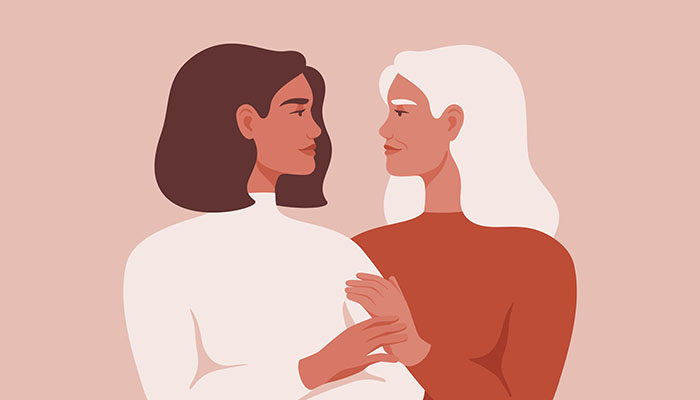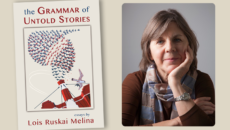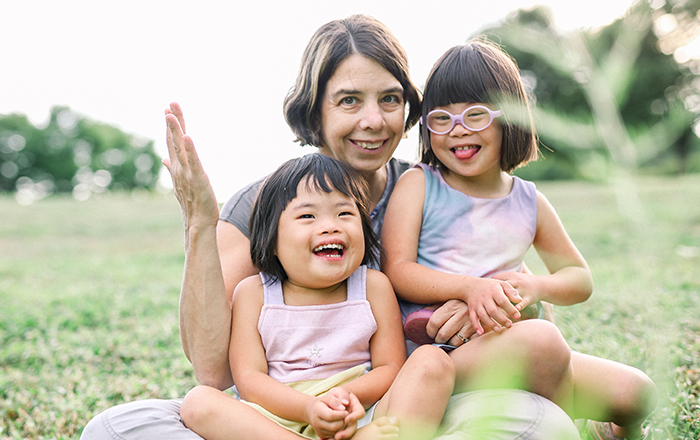Around 6:30 on most mornings, Alison Marshall would grab a cup of coffee and begin her daily search for a baby. She’d sweep through the various sites bookmarked on her computer and read as much as she could before leaving for work. If she had a lunch break, she’d return to her Pinole, California, home to do the Internet tour again. And once more before bed. By the end of each day, she had logged six to eight hours in her pursuit of a baby.
Alison and her husband, David, were not only looking for a child on the Internet; they were advertising for one, too. Though they’d signed up with an adoption agency, they also paid $50 a month each to three adoption Websites. In exchange, these for-profit sites provided links to the Marshalls’ own Web page, featuring nine photos of the couple and their four-year-old daughter, Cassie, as well as a six-paragraph description of their “Dear Birth Mother” letter. When birth mothers clicked on the words “Alison and David,” they read that Alison works part-time as a dental hygienist and that David is a senior research technician. They saw that the Marshalls love hiking and camping. They found photographs of Alison, with her sandy ringlets, of David, whose smile hints at his playful nature, and of beaming Cassie, whom they adopted at birth. The overall image: a loving, financially secure family.
One evening, the Marshalls sat at their kitchen table, choosing the words for their letter. Over the next few days, Alison leafed through hundreds of family photos, searching for the right mix. She ignored advice she’d read on a bulletin board: not too many photos of children (birth parents don’t want their baby to be overshadowed). And she disregarded the counsel of a friend: no pictures of the big dogs (birth parents might be scared off). “We assumed the best thing to do,” says David, “was come off as ourselves.” So they paid for their Web page to be developed, crossed their fingers, and waited for their e-mail box to fill up.
“I encourage people to be proactive,” says Rachel Breuer, former outreach coordinator at the San Francisco-based Adoption Connection, the Marshalls’ agency. “The more you plaster yourself everywhere, the better.” On the Internet, a couple in Boston can directly connect with, say, a 16-year-old pregnant girl in the Bible Belt. And that girl may feel more comfortable privately perusing Web pages than making cold calls to adoption agencies.
“You get a lot more contacts on the Internet, but not all of them are going to work out,” warns Grace Allen, community outreach coordinator for the Independent Adoption Center in Pleasant Hill, California. “And not all the contacts are on the up-and-up.”
In June, one week after posting their Web page, the Marshalls received their first adoption-related e-mail. A Virginia woman wrote that her brother’s girlfriend was considering adoption. Alison telephoned and then e-mailed the woman but never heard from her again.
The next e-mail arrived in July. “I am 11 weeks pregnant, and I want the best for my baby,” it read. “After thinking for quite some time, I feel that adoption would be best.” The writer was a 20-year-old named Laura Stubbs, with a high school education and a part-time job at a community college’s computer lab. In a series of e-mails over the next several weeks, Alison learned that Laura lived in Columbia, South Carolina, with her mother; and, though Laura was no longer involved with the baby’s father, she said he supported an adoption.
Laura was drawn to the fact that the Marshalls were a down-to-earth, two-parent family and that their Web page featured Cassie in almost every photo. She also liked that the Marshalls supported her desire for an open adoption in which she’d receive pictures and letters about her child throughout his or her life and could even visit. She’d already weeded out numerous families online. “I didn’t want the Brady Bunch — just a regular family, dysfunctions and all,” she says. She wasn’t drawn to expensive cars or rambling houses. She didn’t like “frou-frou dogs. People who put bows in their dogs’ ears aren’t going to let my kid play in the mud.”
Although the Marshalls were her first choice, Laura was up-front with them that she was still considering keeping the baby. “I’m just having a really difficult time making the final decision,” she wrote them in September.
The Marshalls’ agency sent her adoption information, as well as a medical-history form to fill out. But Laura was still hesitant, and Alison and David didn’t want to push her into a decision she’d later regret. So in November Alison told her that she was going to stop calling and writing, so that Laura could make the decision on her own.
“I don’t think we’ll find a baby with the Internet,” Alison told David one night in December. Eight months had passed since the Marshalls posted their Web page. One birth mother wrote and called a few times but then changed her phone number. Another pregnant woman said she wanted the Marshalls to buy her a plane ticket to South Africa in exchange for her baby.
“You start thinking, What’s wrong with me?” Alison says. “I was depressed and didn’t want to go out of the house. I thought Laura may have decided but didn’t want to disappoint us. I felt like a madwoman at times — like, just give me a baby.”
Three days before Christmas, Alison convinced herself to go shopping. When she came home, she found a message from Laura. “I’ve made my final decision,” Laura said when Alison called back. “I want you to have the baby.”
The sun is about to rise on a clear Valentine’s Day at Lexington Medical Center in West Columbia, South Carolina. While David waits outside, Alison is in the delivery room with Laura and her mother. She watches as Michael Patrick Marshall, 7 pounds 11 ounces, is born. When the nurse places Michael on Laura’s chest, she calls over to Alison: “Come here, Mommy, and see your son.”
Later that afternoon, Laura’s lawyer and a social worker arrive. The social worker spreads legal papers across Laura’s bed: “You are relinquishing your child; you are sending the child out of state,” the social worker tells her. Laura strokes Michael’s tiny fist and puts a pacifier in his mouth. “You have the right to independent counsel…to another social worker…to another adoption agency. We can stop right now. What do you want to do?”
“I want to go ahead,” Laura says in a clear voice.
Though signing the papers is a legal turning point for Laura, it’s not the emotional one. She and her mother have planned a small ceremony in the hospital chapel, so that Laura can have a moment just between her and the Marshalls. No lawyers, no social workers, no hospital officials. They began their relationship without intermediaries, and Laura wants to solidify it without them.
Laura dresses Michael in an ivory gown, made by her grandmother, and goes to the chapel. David and Alison are at the altar. When Laura reaches them, she lays Michael in his mother’s arms.
“If you want to see us,” says Alison, “just call.” She wraps her arms around Laura. “We’ll take care of him,” Alison whispers in Laura’s ear. “I promise.”
Adoption Agencies with U.S. Newborn Adoption Programs
See all adoption agencies with U.S. newborn adoption programs >



